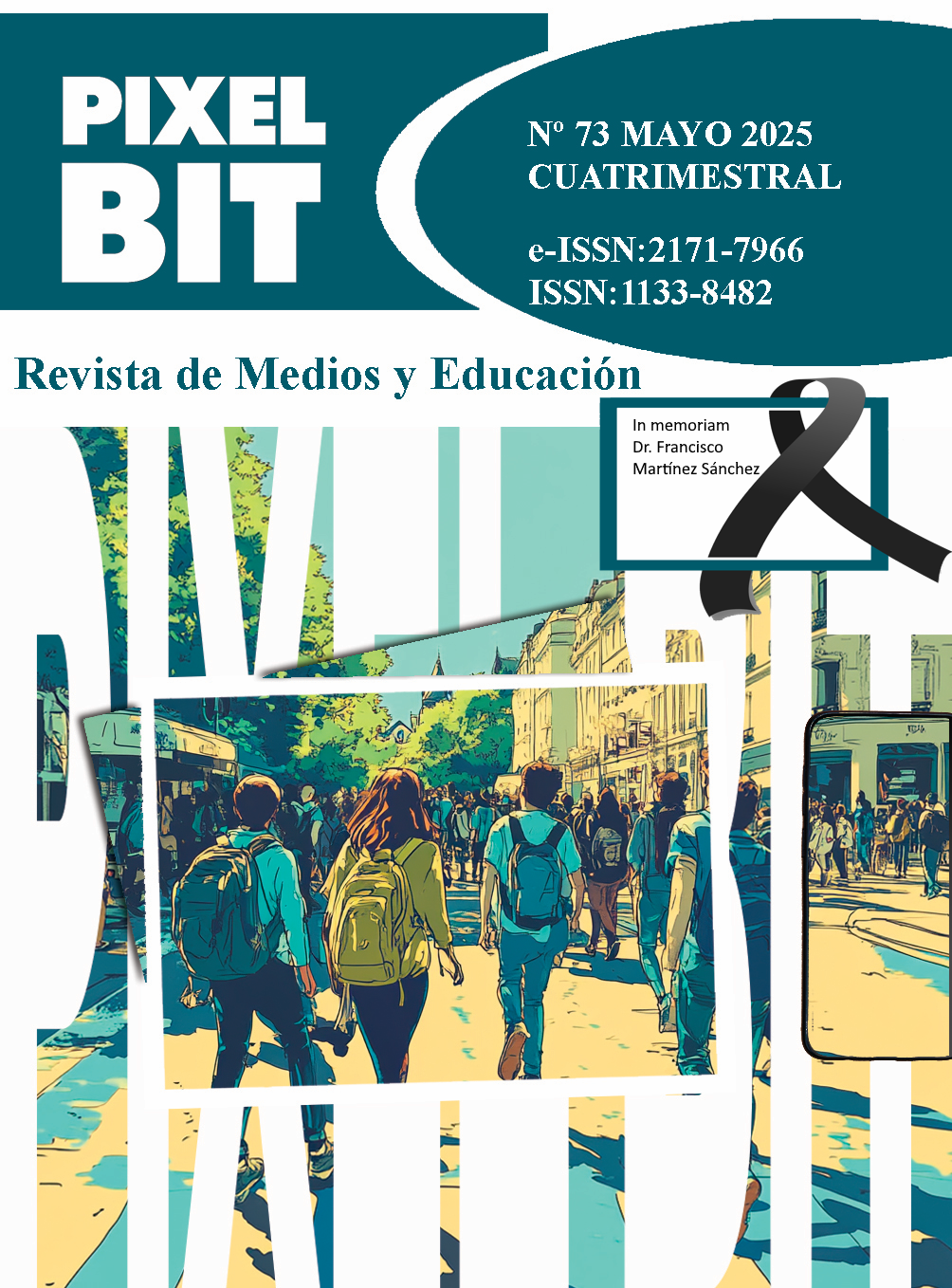Resumen
Este artículo examina cómo la inteligencia artificial (IA) está revolucionando el mercado laboral en España, centrando la atención en la creación de nuevos roles profesionales y la transformación de los existentes. Utilizando una metodología mixta que combina encuestas a docentes y estudiantes con entrevistas a profesionales del sector, el estudio revela un modelo de aprendizaje colaborativo entre alumnos, profesores e IA. Los educadores están evolucionando de ser meros transmisores de conocimiento a facilitadores del aprendizaje, aprovechando la capacidad de la IA para preparar contenidos y adaptar enfoques pedagógicos. Los estudiantes, en general optimistas, identifican oportunidades en roles emergentes como expertos en diseño con IA y consultores tecnológicos. Sin embargo, los docentes reconocen la necesidad de ajustar los currículos hacia estos nuevos roles, aunque con poca claridad sobre cuáles serán los más demandados. Entre los profesionales, existe una división de opiniones: algunos creen que la IA mejorará los roles actuales, mientras que otros prevén la aparición de nuevos puestos como antropólogos tecnológicos y expertos en bioeconomía. El estudio subraya la importancia de la formación continua, la actualización de habilidades y la integración de valores de empatía y sostenibilidad para preparar a los estudiantes para el futuro laboral.
Citas
Asociación para Adecco. (2023). Employment Trends Report. https://www.adecco.com
Almasri, F. (2024). Exploring the impact of artificial intelligence in teaching and learning of science: A systematic review of empirical research. Research in Science Education, 54, 977–997. https://doi.org/10.1007/s11165-024-10176-3
Brynjolfsson, E., & McAfee, A. (2014). The Second Machine Age: Work, Progress, and Prosperity in a Time of Brilliant Technologies. W. W. Norton & Company.
Crawford, J., Cowling, M., & Allen, K. A. (2023). Leadership is needed for ethical ChatGPT: Character, assessment, and learning using artificial intelligence (AI). Journal of University Teaching and Learning Practice, 20(3), 2. https://doi.org/10.53761/1.20.3.02
Chui, M., Manyika, J., & Miremadi, M. (2016). Where machines could replace humans-and where they can't (yet). McKinsey Quarterly.
Dueñas Zorrilla M., Tejada Fernández, J., & Pozos Pérez K. V. (2024). Design and validation of a scale for self-assessment of teaching digital competence and attitude towards educational innovation of in-service teachers. Revista Complutense de Educación, 35(2), 239-252. https://doi.org/10.5209/rced.85257
Floridi, L., Cowls, J., Beltrametti, M., Chatila, R., Chazerand, P., Dignum, V., & Vayena, E. (2018). AI4People-An Ethical Framework for a Good AI Society: Opportunities, Risks, Principles, and Recommendations. Minds and Machines, 28(4), 689-707. https://doi.org/10.1007/s11023-018-9482-5
García, E., & Weiss, E. (2019). The teacher shortage is real, large and growing, and worse than we thought. Economic Policy Institute.
Giannakos, M., Azevedo, R., Brusilovsky, P., Cukurova, M., Dimitriadis, Y., Hernandez-Leo, D., ... Rienties, B. (2024). The promise and challenges of generative AI in education. Behaviour & Information Technology, 1-27. https://doi.org/10.1080/0144929X.2024.2394886
Gunkel, D. J. (2020). An introduction to communication and artificial intelligence. Cambridge: Polity Press.
Gwo-Jen, H., Xie, H., Wah, B. W., & Gašević, D. (2020). Vision, challenges, roles and research issues of Artificial Intelligence in Education. Computers and Education: Artificial Intelligence, 1, 100001. https://doi.org/10.1016/j.caeai.2020.100001
Holmes, W., Bialik, M., & Fadel, C. (2019). Artificial Intelligence in Education: Promises and Implications for Teaching and Learning. Center for Curriculum Redesign.
Jordan, M. I., & Mitchell, T. M. (2015). Machine learning: Trends, perspectives, and prospects. Science, 349(6245), 255-260. https://doi.org/10.1126/science.aaa8415
López-Regalado, O., Núñez-Rojas, N., López Gil, O. R., & Sánchez-Rodríguez, J. (2024). Analysis of the use of artificial intelligence in university education: a systematic review. Pixel-Bit. Revista De Medios Y Educación, 70, 97-122. https://doi.org/10.12795/pixelbit.106336
Luckin, R., Holmes, W., Griffiths, M., & Forcier, L. B. (2016). Intelligence Unleashed: An Argument for AI in Education. Pearson.
ManpowerGroup (2023). Future of Work. https://www.manpowergroup.com
Mañas-Viniegra, L., & Jiménez-Gómez, I. (2019). Evolution of the professional profile of the community manager during the decade 2009-2018. El profesional de la información, 28(4), e280403. https://doi.org/10.3145/epi.2019.jul.03
McCosker, A., & Wilken, R. (2020). Automating vision: The social impact of the new camera consciousness. Routledge.
Miller, S., & Bossomaier, T. (2019). Cybersecurity, Ethics, and Collective Responsibility. Oxford University Press.
OpenAI. (2023). Teaching with AI. https://openai.com/index/teaching-with-ai/
Russell, S., & Norvig, P. (2020). Artificial Intelligence: A Modern Approach. Pearson.
Samacá-Salamanca, E., Martínez-Estrella, E. C., & García-Rivero, A. (2024). Qualitative analysis of the interpersonal profile of centennials in Colombia and Mexico. Revista Latinoamericana de Ciencias Sociales, Niñez y Juventud, 22(2), 1-28. https://doi.org/10.11600/rlcsnj.22.2.5919
Sánchez-Caballé, A., Cela-Ranilla, J., & Esteve-Mon, F. (2024). Millennials vs Centennials: Different Ways of Learning? Pixel-Bit. Revista De Medios Y Educación, 70, 181-193. https://doi.org/10.12795/pixelbit.105609
Selwyn, N. (2019). Should Robots Replace Teachers? AI and the Future of Education. Polity Press.
Topol, E. (2019). Deep medicine: How artificial intelligence can make healthcare human again. Basic Books.
World Economic Forum (2024). The Jobs Reset Summit. https://www.weforum.org
Zawacki-Richter, O., Marín, V. I., Bond, M., & Gouverneur, F. (2019). Systematic review of research on artificial intelligence applications in higher education - where are the educators? International Journal of Educational Technology in Higher Education, 16(1), 39. https://doi.org/10.1186/s41239-019-0171-0

Esta obra está bajo una licencia internacional Creative Commons Atribución-NoComercial-SinDerivadas 4.0.
Derechos de autor 2025 Pixel-Bit. Revista de Medios y Educación

